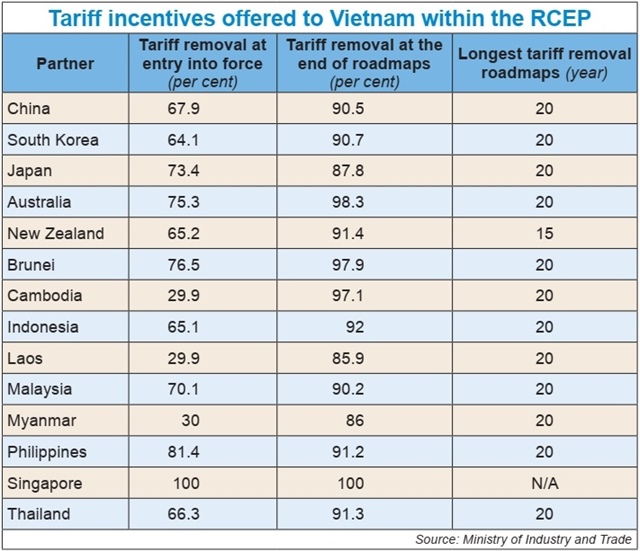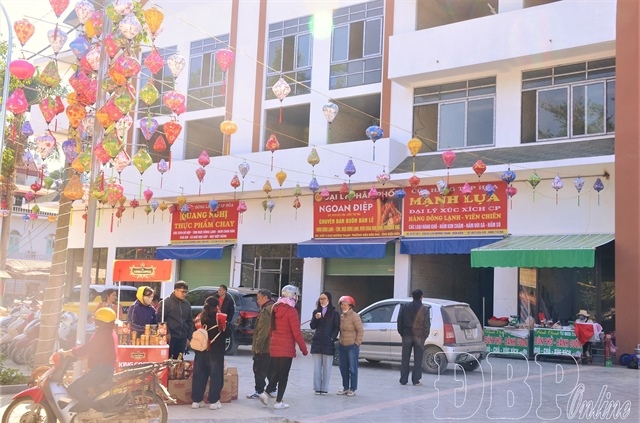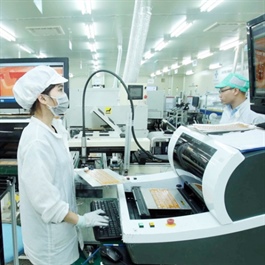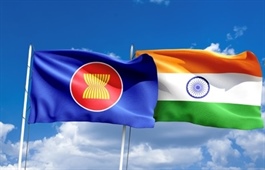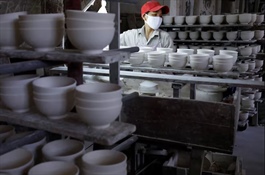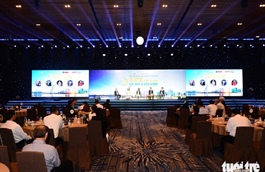Vietnam reinforces free trade deal advantages
Vietnam reinforces free trade deal advantages
Three years after the entry into force of a landmark regional free trade agreement, Vietnam is poised to deepen trade and investment ties, leveraging the deal’s favourable rules of origin to boost exports and attract foreign funding.
Fresh figures from the Ministry of Industry and Trade (MoIT) showed that in the first 11 months of 2024, Vietnam’s total trade with member states of the Regional Comprehensive Economic Partnership (RCEP) is estimated to have come in at $394.61 billion or 55.1 per cent of Vietnam’s total trade, which was about $715.55 billion (see chart).
In which, Vietnam’s export turnover is estimated to have reached about $140.8 billion, accounting for 38 per cent of Vietnam’s total export turnover of $369.93 billion.
The country’s total import value is estimated to have sat at $253.81 billion, responsible for 73.4 per cent of Vietnam’s total import turnover of $345.62 billion. Vietnam’s export turnover from RCEP member states only hit about $146 billion in 2023.
Inked in 2020 by the 10 ASEAN member states and five other nations, the deal took effect in January 2022.
According to the MoIT, Vietnam’s trade with RCEP economies will continue rising because it is the world’s largest free trade agreement (FTA), covering 30 per cent of the world’s population and 30 per cent of global GDP. The members of the agreement are diverse, including the world’s major economies such as China, Japan, and South Korea, developing countries, and lesser developed countries.
Notably, the RCEP includes major raw material suppliers such as China, Japan, South Korea, and ASEAN countries, helping to connect the current ASEAN+ FTAs but applying only one set of rules of origin (ROO), contributing to the diversification of raw material sources, and promoting the development of supply chains.
|
Reduced burdens
According to Nguyen Thi Thu Trang, director of the Centre for WTO and International Trade under the Vietnam Chamber of Commerce and Industry, while carrying out projects in Vietnam, investors would need to import products for production and then exports abroad, including to RCEP member states.
“One of the most noticeable points is that this deal has been designed to reduce costs and time for enterprises, and the agreement allows them to export goods to each member market without having to meet that market’s own requirements,” Trang said.
This will help investors expand investment in Vietnam, Trang added.
“For example, for the Comprehensive and Progressive Agreement for Trans-Pacific Partnership, enterprises from Vietnam will find it difficult to take advantage of tariff incentives for their garments and textiles due to tough requirements in ROO applied commonly within the bloc because almost all materials Vietnam need are imported from China which is not member of the trade bloc. However, for the RCEP, to which China is a member, the burden of import costs for input materials will be reduced thanks to tariff incentives.”
In addition, the RCEP will benefit Vietnam’s many key export items, including garments and textiles, agricultural products, and aquatic products exported to member markets like Japan and South Korea.
Specifically, under the Vietnam-Japan FTA and ASEAN-Japan Comprehensive Economic Partnership, as well as under the Korea-Vietnam and the ASEAN-Korea FTAs, the garments and textiles are subject to meet 2-phase ROO, meaning such materials must be produced within ASEAN, Japan, or South Korea before receiving tariff incentives.
Meanwhile, under the RCEP, Vietnam can import from everywhere and conduct production in its territory, and the products can enjoy tariff incentives when exported to Japan or South Korea.
Similarly for aquatic products, while the Japan agreements require ROO in Vietnam, the RCEP allows the country to import breeds from anywhere or source the breeds from inside its territory, and all export products are still entitled to tariff incentives.
|
Desire for more partnerships
According to the MoIT, Vietnam believes it can continue increasing trade with the RCEP region as the agreement will continue expanding its membership.
In September 2024, the RCEP Joint Committee adopted the procedures for accession, which is considered an open and inclusive regional agreement. According to the document, any economy can become a member of the trade pact 18 months after its entry into force.
Currently, Hong Kong, Sri Lanka, Chile, and Bangladesh plan to join the deal whose trade in 2023 reached $5.6 trillion combined.
During Vietnamese State President Luong Cuong’s visit to Chile in November, a joint statement between both countries said, “Chile has stressed its desire to join the RCEP and Vietnam welcomes this proposal and will continue pushing discussions among member states about the issue.”
Vietnam-Chile trade turnover touched $1.5 billion last year and $1.57 billion in the first nine months of 2024, up 5 per cent compared to the corresponding period of 2023. Chile is now the country’s fourth-largest trade partner in the Latin America region, and Vietnam is the largest trade partner of Chile in Southeast Asia.
Under the RCEP, member states have committed to remove 87.8 to 98.3 per cent of tariff lines for Vietnam, and ASEAN countries vowed to do that with 85.9 to 100 per cent. The longest roadmap for tariff elimination is 15–20 years from when the deal became valid (see box).
According to consulting firm Dezan Shira & Associates, as the RCEP is focused on trade facilitation, the blue-collar sector is expected to benefit the most. Moreover, consumer sectors like tourism, education, entertainment, healthcare, and retail are also expected to benefit as the middle class expands. Also, Vietnam’s export-oriented sectors such as IT, agriculture, automobiles, footwear, and telecommunications are expected to see gains, it added.
Vietnam’s Ministry of Planning and Investment reported that cumulatively as of late November, Vietnam attracted about $110.1 billion in registered investment capital from ASEAN member states, including Singapore ($82.3 billion), Thailand ($14.3 billion), Malaysia ($12.95 billion), and Indonesia ($682.5 million).
|
Better access to regional markets allows countries to benefit from the faster growth of exports, whereas reduction of a country’s own barriers coupled with a reduction of barriers in regional markets leads to lower prices of imports. The differences in gains across countries are linked to the initial level of tariffs, non-tariff barriers, and border costs, and their reductions under the RCEP agreement, and to the initial level of intra-RCEP trade. The overall welfare implications are also linked to the sectors of comparative advantage. If sectors benefiting under the RCEP have higher productivity than those that would be expanding in the baseline scenario, the reallocation of production leads to faster economywide productivity gains and income growth. Our results suggest that the RCEP will have a positive impact on the trade and income in its member countries. Only assuming reductions in tariffs and non-tariff measures (RCEP scenario), real income is expected to increase by 0.21 per cent, and real GDP by 0.17 per cent in 2035, compared to the business-as-usual or baseline scenario for RCEP member countries. This translates to an average annual boost to growth of 0.012 per cent over 2022-2035. The estimated impact is higher if the reduction in trade costs due to the implementation of a common set of rules of origin is considered (ROO liberalisation, with a 0.5 per cent and 0.3 per cent impact respectively for RCEP member countries), and even higher if an increase in productivity is assumed as well (productivity kick, with a 2.5 and 1.9 per cent increase. respectively). The impact on the rest of the world is negative, although very slight due to trade diversion, except when the productivity kick is assumed. In that case, real income in the rest of the world increases by 0.07 per cent. Source: World Bank Group |


